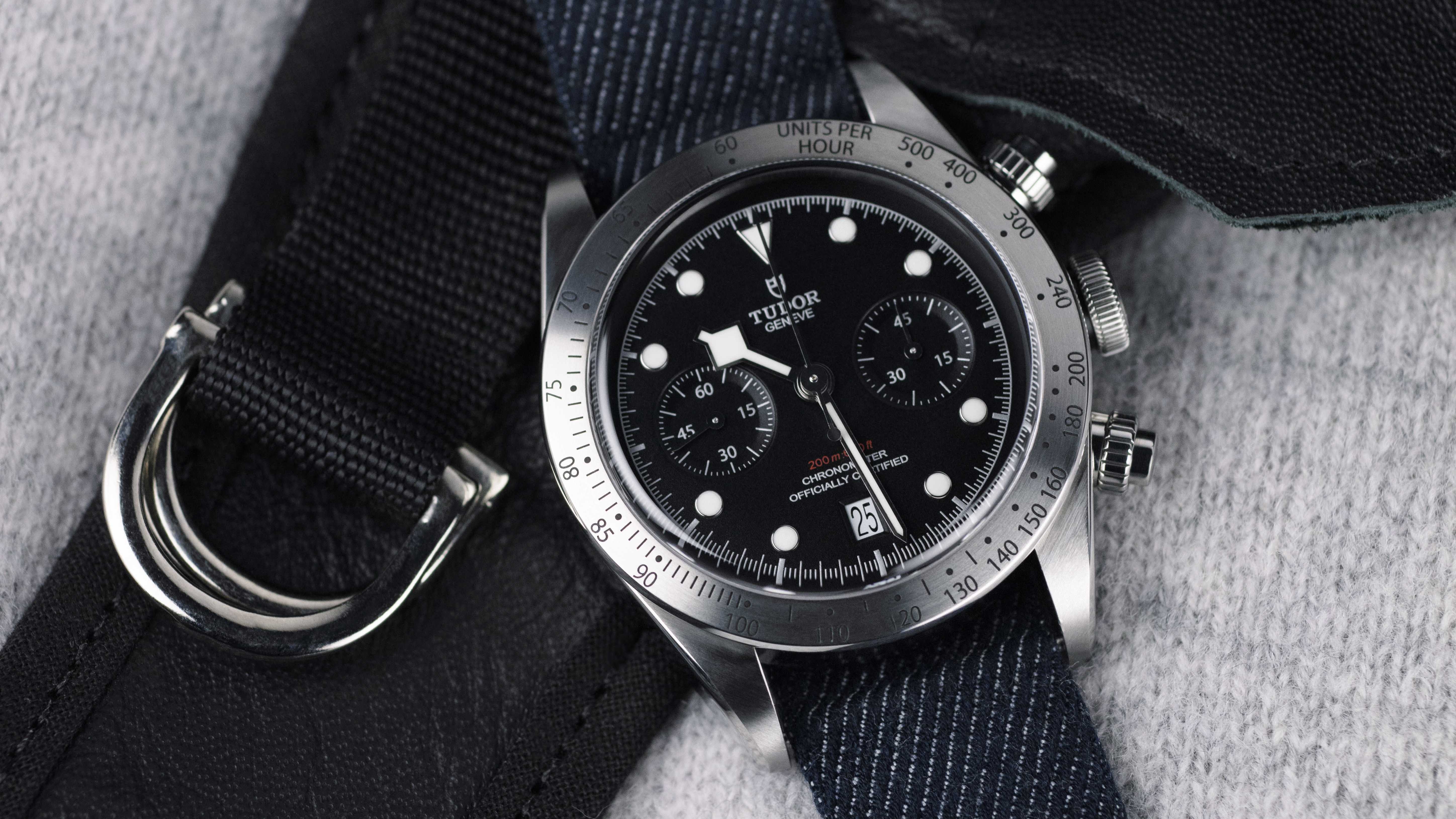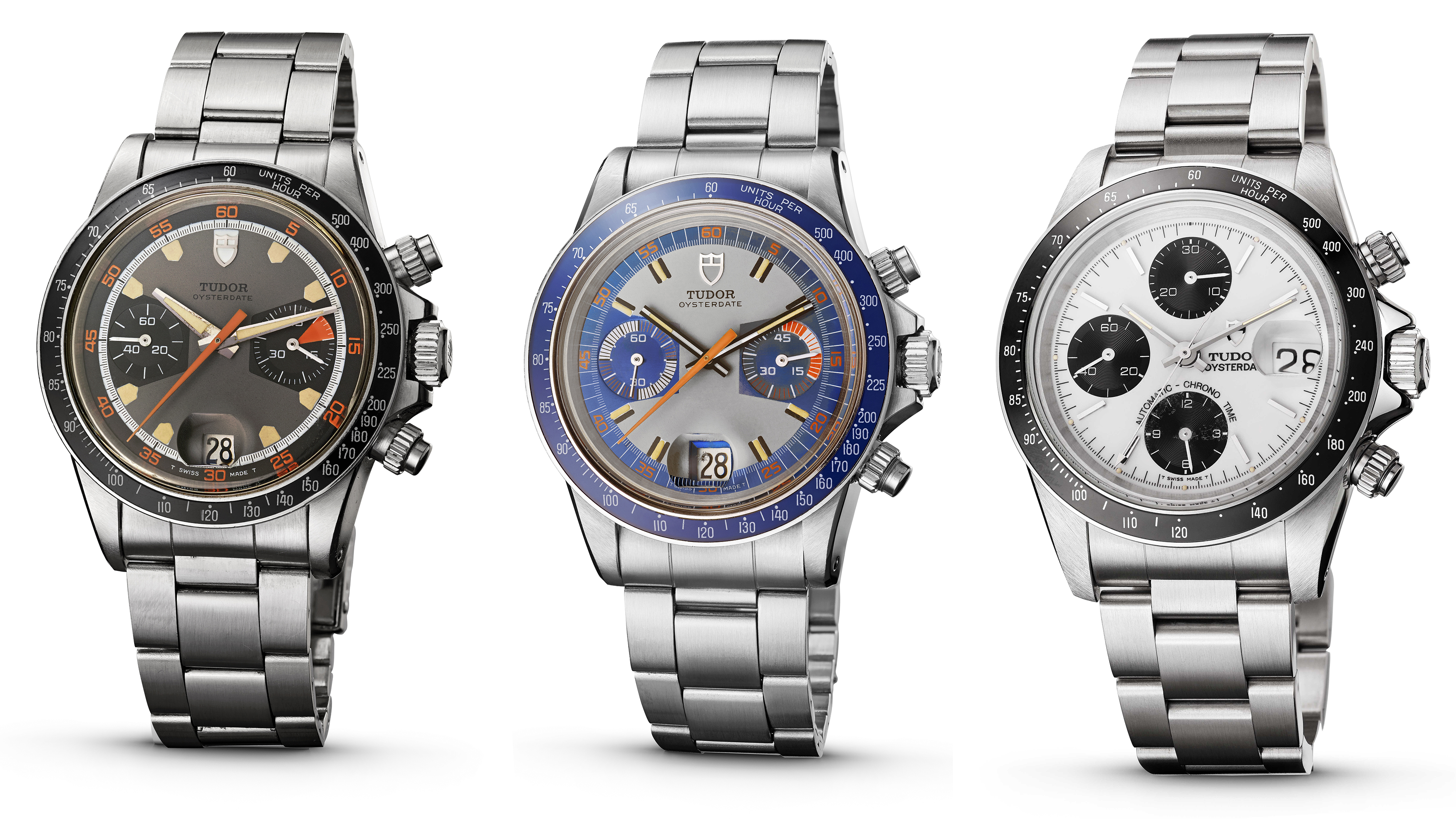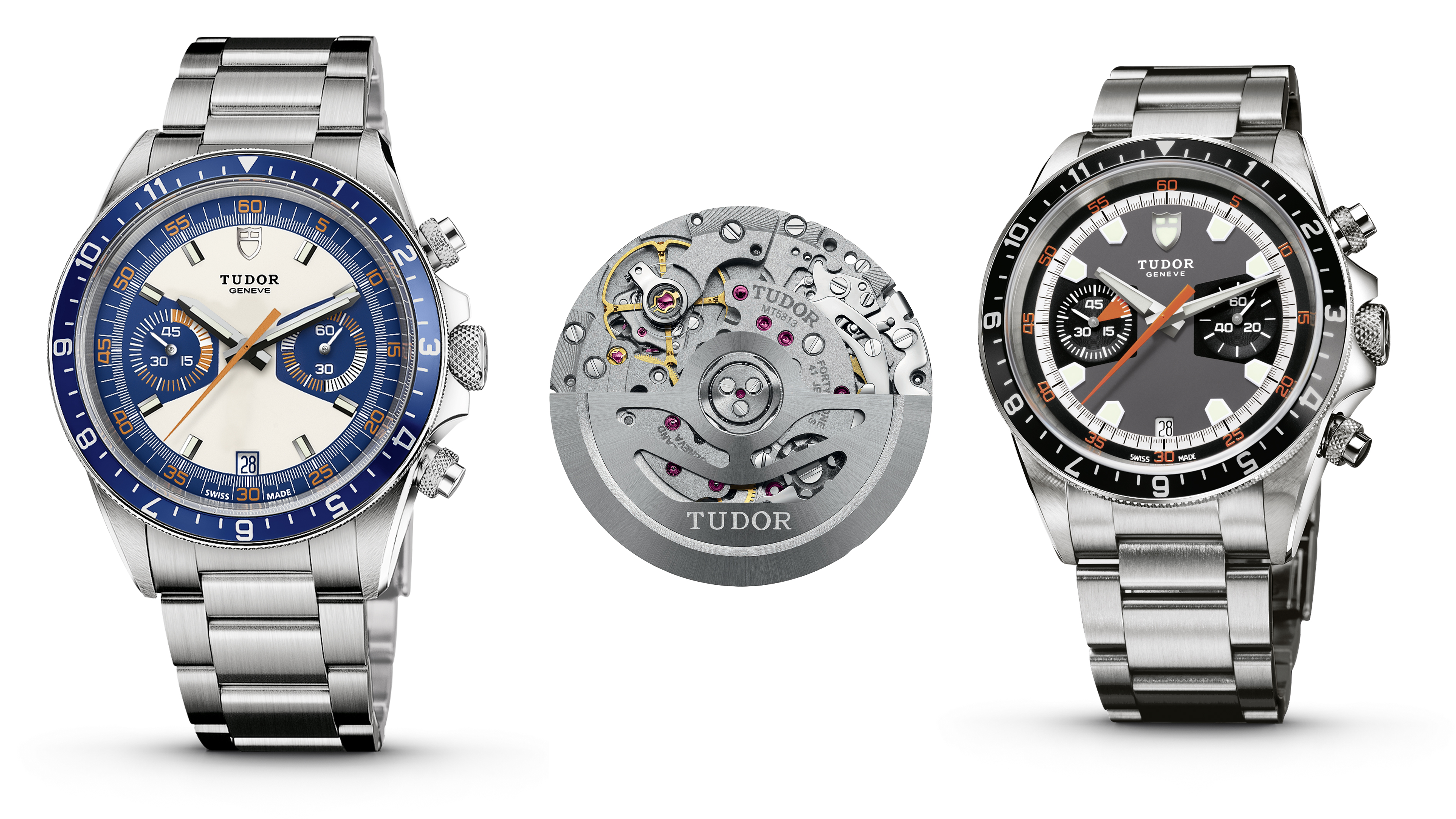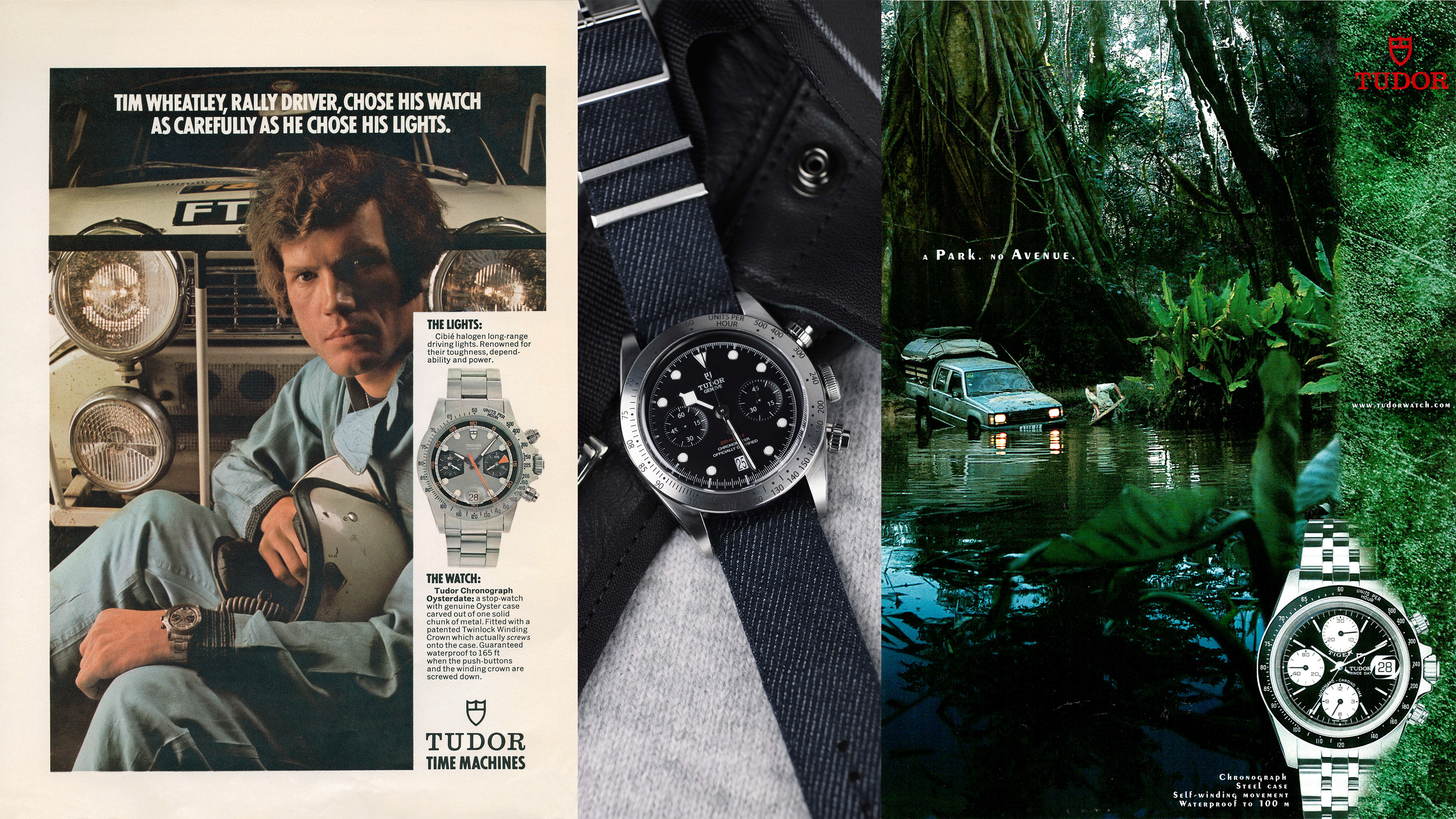

Since it was established by Rolex founder Hans Wilsdorf in 1926, Tudor has built a reputation for producing high-quality Swiss watches, but at a more attainable price than its more famous sibling. The brand first made a name for itself in the tool watch sector, selling timepieces for professional divers and the military, and issued models to the US Navy Seals and French Navy.
Then, with the Series 7000 Oysterdate in 1970, Tudor took its first steps into the chronograph market, where it has remained for the past 50 years. The watch was powered by a mechanical, manually-wound Valjoux 7734 calibre, which sat inside a 39mm case which was considered large at the time.
- T3's guide to the best watches for men
- The best watches under £1000
- 5 best watches to invest in right now
- Tudor Black Bay Navy Blue
Two of the three versions of Oysterdate featured a 500-scale tachymeter etched into their bezels, which can be used to calculate the average speed of an object travelling across a known distance. Tachymeters were commonly promoted at the time as useful tools for measuring the speed of a car, and became commonplace on sports watches aimed at racing drivers.

Of course, the chronograph also meant the watch could be used as a stopwatch, with the ability to measure events up to 45 minutes in length to one second of accuracy.
Next came the Series 7100 Monte Carlo, which debuted just a year later in 1971 and remained in Tudor’s catalogue until 1977. The name was paired with dials designed to look like roulette wheels, while its predecessor’s tachymetre and two-dial chronograph remained in place. A new colour scheme with a blue bezel and grey dial with orange highlights gave the timepiece a bolder look which still looks fresh almost half a century later.
Inside, a more sophisticated Valjoux 7734 manually-wound calibre with clutch and column wheel was fitted for improved chronograph performance.
For the Series 9400 and 79100 of 1976, Tudor made the significant change of fitting a self-winding movement to its chronograph for the first time, specifically the Valjoux calibre 7750.
Sign up to the T3 newsletter for smarter living straight to your inbox
Get all the latest news, reviews, deals and buying guides on gorgeous tech, home and active products from the T3 experts
Aside from the date complication, beneath Rolex-style magnification, moving from the six to three o’clock position, the overall design remained similar, but the case became wider to accommodate the extra size of the kinetic-powered movement; this extra bulk earned it the nickname of Big Block among collectors.

The next instalment of Tudor’s chronograph story didn’t happen until 1995 and the 79200 Series ‘Sapphire Chronograph’. Here, the case became more rounded for the first time in 25 years, and as the nickname suggests, sapphire crystal was introduced for the first time. Gold and steel configurations were offered by Tudor, along with a model sporting a leather strap. The calibre 7750 movement remained, but it too had by now received a number of significant updates.
Fast-forward to the year 2010 and we have the Heritage Chrono, launched to celebrate 40 years of the Tudor chronograph. This model acted as a modern interpretation of the reference 7033 from back in 1970, just as the new 7149 released in 2013 sported a design harking back to the blue and orange-detailed 1971 Monte Carlo mentioned earlier.
These new models did away with the earlier tachymetre, instead opting for a rotating diver’s bezel. The newer watches also did away with their predecessor’s date magnification, but retained the complication’s six o’clock position.

Then, in 2013, Tudor caused a stir with the Fastrider Black Shield, which features a stealthy matt black dial and a whole new design language for the company’s chronograph. A monobloc ceramic case once again had a tachymetre on its bezel, while the case took on a more angular look compared to the more rounded models of the 1990s; the case was designed to mimic that of the fairing of a superbike, says Tudor.
This model was offered in black with either red or bronze hour markers at launch, but the range later included a high-contrast black with white markings option.
Finally, we have the Black Bay Chrono of 2017. This watch is once again a nod towards the world of motorsport, with a tachymetre etched into its stainless steel bezel, a two-dial chronograph and a date complication at six o’clock.
The self-winding Manufacture MT 5813 movement has an impressive 70-hour power reserve, and with its column wheel mechanism and vertical clutch, promises robustness and reliability - just like the brand's earliest driving and military timepieces.
With Baselworld 2020 some form of launch event coming up – will Tudor introduce a new chronograph on its 50th anniversary? Only time will tell…
Liked this?
Alistair is a freelance automotive and technology journalist. He has bylines on esteemed sites such as the BBC, Forbes, TechRadar, and of best of all, T3, where he covers topics ranging from classic cars and men's lifestyle, to smart home technology, phones, electric cars, autonomy, Swiss watches, and much more besides. He is an experienced journalist, writing news, features, interviews and product reviews. If that didn't make him busy enough, he is also the co-host of the AutoChat podcast.
-
 3 overrated shoulder exercises, according to a fitness expert (and what to do instead)
3 overrated shoulder exercises, according to a fitness expert (and what to do instead)Sculpt 3D shoulders whilst minimising injury with these three alternative exercises
By Bryony Firth-Bernard Published
-
 Polar’s new subscription feature lands in the shadow of Garmin’s Connect+ rollout
Polar’s new subscription feature lands in the shadow of Garmin’s Connect+ rolloutPR genius or timing disaster? Polar’s new Fitness Programme adds adaptive training to its ecosystem
By Matt Kollat Published